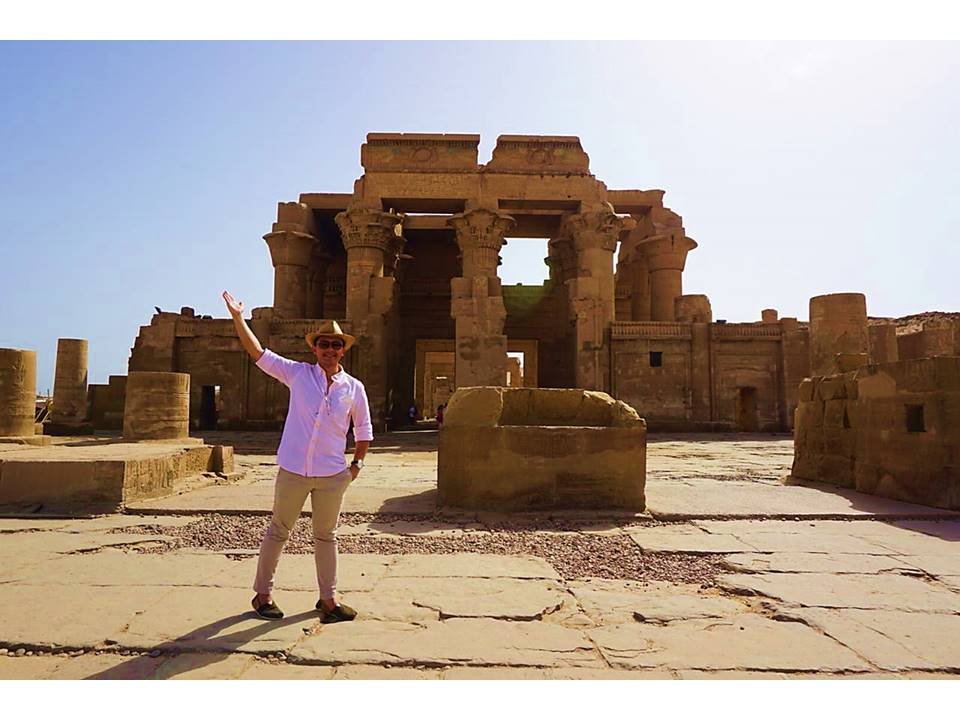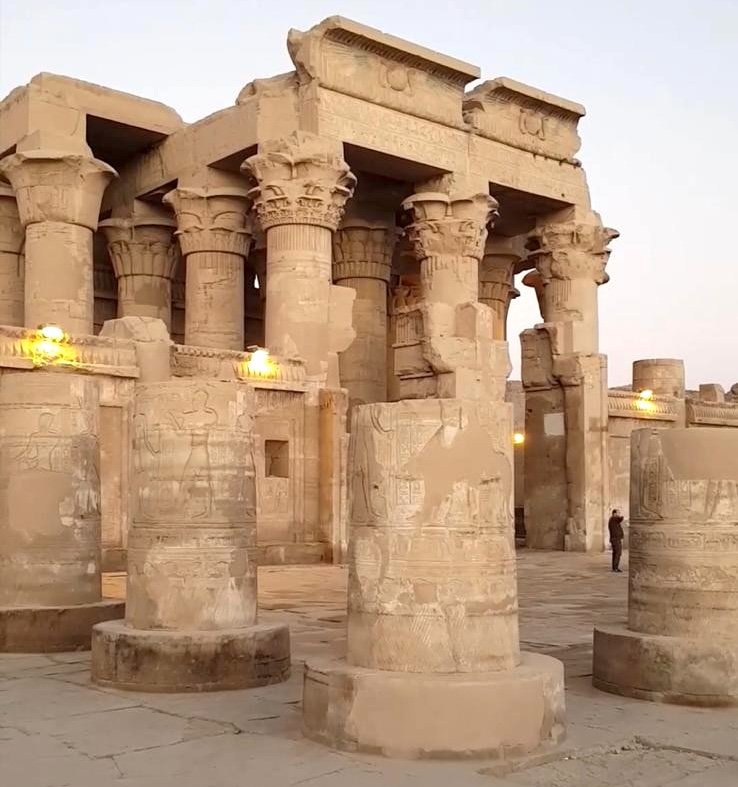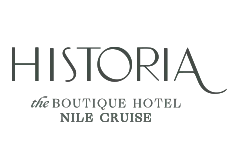Thousands of years old, the Kom Ombo Temple is remarkable for its dedication to both Sobek, the crocodile god, and Horus the Elder, the falcon-headed god – a rare example of a dual temple in ancient Egypt.

About 45 kilometers north of Aswan, during your Nile cruise from Aswan to Luxor, there is an amazing building located on a high hill on the eastern bank of the Nile, the Temple of Kom Ombo. This Greco-Roman temple was unusually dedicated to two deities, rather than just one, like other Egyptian temples scattered along the Nile.
“Kom Ombo” is a mixed word. The first part is Arabic and refers to a hill or plateau. The second part, “Nabu” or “Anbu,” which was derived from “Embo,” is Greek and means gold, thus becoming the meaning “hill of gold.”
Most historical studies indicate that Kom Ombo was a sacred site for the ancient Egyptians since prehistoric times, and is mythologically associated with the story of the conflict between the gods Horus and Seth.
When was the Kom Ombo Temple built?
Some archaeological inscriptions indicate that the current temple was built on the ruins of an ancient temple, also dedicated to the worship of the god Sobek. It was called “Per-Sobek,” meaning “House of Sobek,” and dates back to the reign of King Thutmose III in the 18th Dynasty (1292-1550 BC).
During the Ptolemaic period, Kom Ombo increased as it served as a station for the care of elephants coming from Africa. These elephants were used by the Greeks in their wars to compete with the Indian elephants used by the Seleucids.
King Ptolemy V was the first to begin construction of the current temple (205-180 BC). The temple’s construction progressed during the reign of Ptolemy VI until the reign of Ptolemy VIII, who completed the construction of the hypostyle hall, except for the inscriptions, which were completed during the reign of the Roman Emperor Tiburius (14-37 BC). Emperor Domitian also added some additions to the temple, inscribing his name on it. Construction on the temple continued during the reigns of the Roman emperors Caracalla, Geta, and Macrinus until 218 AD, taking approximately 400 years to complete.
What is the Layout of the Temple of Kom Ombo?
The temple begins with the outer courtyard, topped by the pylon, followed by an outer hypostyle hall, followed by a smaller inner hypostyle hall. These courtyards lead to three successive courtyards, ending with two chapels dedicated to the gods Horus and Sobek. All buildings are surrounded by a large vestibule, from which several secondary rooms open, used as storage rooms.
The temple of Kom Ombo is unfamiliar for the ancient Egyptian temples, as it has a twin layout of two different gods.
– The First Payolon is the main gate of the temple, and it is damaged by an earthquake.
– The Open hall of columns; still, some remains there for the columns, especially the bases.
– Then find the best part of the temple, which is the second Paylon; as is second gate was closed most of the year in ancient times, except the Pharaohs and Priests allowed them to enter from this part of the temple.
– Following many halls to reach the inner sanctuaries of the temple, there is a beautiful inscription for the Greek rulers who depicted themselves as Pharaohs in front of the ancient gods and goddesses.
– At the end ot the temple, there is a crypt between the two temples, which was used to hide the treasures and holy documents of the temple, with a secret entrance; you can see the secret entrance there after the damage to the walls that covered the hidden gate.

Why did ancient Egyptians worship the evil god?
Due to the shallow waters in the area, the waters became a haven for crocodiles, which became notorious for this. An Egyptian legend tells of a fortune teller predicting the death of the son of a king in Kom Ombo, which prompted the king to take extra care in the area. One day, while his son was bathing in one of the lakes, he was eaten by crocodiles. The king decided to slaughter all the crocodiles in revenge for his son. Based on the legend, they were associated with the worship of Sobek, so the worship of the evil god; spread in ancient Egypt to avoid the evil and prevent any revenges from them, as the evil was an image of the god Seth, the god of evil.
Good and Evil gods in One Pharaonic Temple.
Regarding the temple’s dedication to the worship of two gods, some archaeologists find it strange that one temple would be dedicated to two gods. It is well known that temples, from the early Pharaonic period until the rise of the Ptolemaic period, were dedicated to a single deity.
Although there were shrines for other deities within the temple, these deities were called “guest gods,” meaning that the owner of the place was the main deity to whose worship the temple was primarily dedicated.
On the other hand, the Greeks were interested in the idea of duality in ancient Egypt, which emerged with the First Revolution, which unified the two halves of Egypt under the rule of a single crown known as the Double Crown. The king’s name became “Nesut-Bity,” which in ancient Egyptian means “King of Upper and Lower Egypt.”
A team of archaeologists in Egypt believes that the Greeks were interested in the idea of uniting good and evil in one temple. The temple was dedicated to Horus, who symbolized good, based on the Ennead myth, which relates to the conflict between Horus and his uncle, Set. The other deity was Sobek the crocodile, a representation of Set, the god of evil.
The Egyptians would catch a crocodile from the Nile, place it in a designated place in the temple, and feed it until a certain day came, when they would slaughter and mummify it, symbolizing the defeat of the forces of evil represented by that animal. Traces of this have been found on the northeastern side of the temple.
Why were the temples of Kom Ombo erected for the evil and good gods?
It is noteworthy that the god of evil occupied the right side of the temple, symbolizing the east, which represents mortal life ending in death. The god of good occupied the left side of the temple, symbolizing the west, which represents eternal life that begins after death. It should be noted that the story of the conflict between Horus and Set (represented as Sobek – the crocodile) was distorted to fit the duality of the temple. This story became known as the “Myth of the Two Brothers.” It tells of Horus and Sobek, who ruled the kingdom of Tell el-Dhahab (Kom Ombo). However, the evil Sobek wanted to monopolize power alone and succeeded in expelling his brother from the kingdom and banishing him far away to the desert.
But because Horus was beloved by the people, the entire population followed him. Sobek found himself a king without a people, and the fields fell into decay. Sobek sought help from the dead, but they sowed sand instead of grain, completely drying up the land and turning it into a barren desert. Afterward, Sobek was forced to reconcile with his brother and divide the temple.
Division of the Temple
The “Division of the Temple” is the most important scene at the Temple of Kom Ombo. It is located in the outer vestibule surrounding the temple. The division between the two brothers took place in the presence of Maat, the goddess of justice and order, who used the scales in the division, symbolizing the return of balance.
How to visit the temple of Kom Ombo?
You can visit the temple of Kom Ombo by car from Aswan, around an hour drive; or from Luxor, which takes around 3 hours drive; but the best option to visit the temple is the Nile Cruise from Luxor or Aswan. We suggest booking your Nile River Cruise to visit the site easily and enjoy the atmosphere of the Nile.
Trusted Partners
Nile Cruisen: Chosen by Leading Brands as Egypt's Top Cruise Operator











